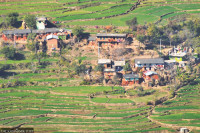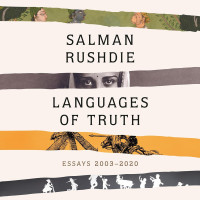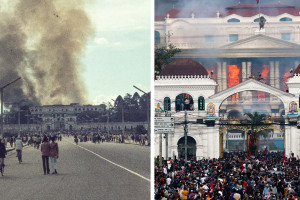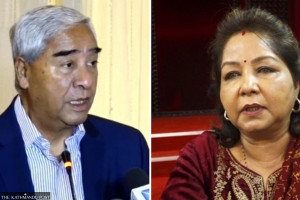Culture & Lifestyle
Searching for the unknowable Maili Sarkini
Folk singer Sarkini’s voice once echoed in royal courts. Today, she lives on only in faint memories and fading anecdotes.
Bibidh Chalise
While history speaks of the past, the lack of it tells about the present. Nepal, too, suffers from a shortage of written history. The country’s past is written not just by the victors, but also reflects the victors. Some from the other side—historically oppressed and marginalised, the defeated ones—appear in the record books; however, they are in vain. Their token representation combines single stories or unidimensional portrayals of their unknown lives. The latter is the case with Maili Sarkini.
A folk singer from Damai Chautari of Dhading, Maili Sarkini, came to Kathmandu during the reign of Juddha Shumsher. She was renowned for her ability to answer anything in tunes and melodies. Once, when Kathmandu had been experiencing drought for more than six months, Prime Minister Shumsher asked her the reason behind it. She replied singing, “Raja le chhade rajpaath garna, bahun le chhade ved, adda le chhodyo nyaya ra nisab, garjana chhodyo megh”. Excerpted from a YouTube programme, ‘Shunya’, featuring Nabaraj Lamsal, a poet and a long-time radio-person, this is the only account, or rather an anecdote, available of Maili Sarkini. However, its actuality is questionable.
Today, the legacy of a person who was talented enough to reply to anything in songs, whose voice echoed in the luxurious Durbars of the Shahs and the Ranas, and in the studio of Radio Nepal, who dared to speak the truth in the face of an autocratic regime, relies merely on one apocryphal narrative.
Maili Sarkini exists but in name-dropping, oral narratives, and a few people’s minds, most of whom are dying. Works that have been done to preserve the history of musicians like Maili Sarkini in Nepal are a handful. Very few among them are up to par. Yet, some quasi-historians feel entitled enough to withhold their source of information as if anything they pen ought to be perceived as ‘shaswat satya’. Some go far enough to rename the musicians.
After a few days of dusting off books at Martin Chautari without any success, I realised the arduousness of the endeavor that I’d taken up. While I’d initially set out to prepare a profile of Maili Sarkini, acquiring even the tiniest piece of information about her was to be a giant feat. That is when I happened to turn the pages of Bulu Mukarung’s ‘Nepali Sangit ko Abhilekh’, an intensive volume with unbalanced descriptions of musicians of Nepal. His own account as a musician is one of the longest written. It was the only book where I could find Maili Sarkini’s anecdote—the same Juddha Shumsher incident rephrased—although, with a twist. Her account was described under a slightly different prefix, Saili Sarkini.
When I approached him about what his source was and why he’d replaced ‘Maili’ with ‘Saili’, “That you search for yourself, I wrote what I heard,” was what Mukarung had to reply. Writers, especially historians, at least in Nepal, are quite notorious for being hesitant to disclose their sources. This brings to question the very intention of writing such volumes. Given Mukarung’s response to a genuine concern, it would not be unfair to doubt the earnestness of his endeavour. Did he write the book to genuinely preserve the diverse history of Nepali musicians, or was it merely a perfunctory ego project submitted to claim his name? Ironically, in the same book’s preface, the same Nabaraj Lamsal, who also hails from Dhading, refers to her as Maili Sarkini.
I tried to meet Lamsal in person as well. Coming from the same town as Sarkini and given that he mentioned her on multiple occasions, Lamsal perhaps knew more about her. He was initially responsive about the subject. But after a series of frequent, and rather annoying, phone calls from me, he probably got bored with it—which is why he stopped receiving my phone calls, or at least that is what I’d like to believe. After a couple of failed attempts, I didn’t want to disturb him any further.
During the search, another lead came my way. Shubh Bahadur Sunam, a veteran saxophonist, had once shown a sketch of Maili Sarkini, hung on one of the walls at Nepal Music Centre, to Shiva Hari Gyawali, a human rights campaigner for marginalised communities, who also happened to be a friend of my professor, Dinesh Kafle. Despite the message having travelled over layers to reach me, the sources seemed true. I visited the place with little hope of seeing how this person I’d been searching for looked. Unsurprisingly, people there were clueless about her. “Shubh sir has passed away. You could have gotten something had you visited when he was here”, one of the officials said.
There might be nothing in a name, but as Manoj Kumar Jha—a member of Rajya Sabha in Indian Parliament—rightly points out, there is everything in a surname, especially in South Asian nations like Nepal, where the caste-based societal hierarchies and prejudices inevitably become systemic. Surnames carry along degrees of privilege. In the case of Maili Sarkini, they probably held the least amount. Sadly, they still do.
It goes without saying that for centuries, Dalits were oppressed and marginalised from anything mainstream. Being a lower-caste woman, as well as a widow according to a poet and radio presenter Yagya Nidhi Dahal, Maili Sarkini was subject to multiple layers of suppression. However, her emergence from an underprivileged background fails to address the inadequacy of archives about her. It cannot be disregarded that many from her generation, even the ones carrying virtuous surnames, have not been fortunate enough to have their chronicles come out.
Nevertheless, writing a book about a musician with a privileged surname, compared to crafting one about someone like Maili Sarkini, has different connotations. In doing so, one also risks patronising their subject. Insufficient research on who she was and how many others like her were, the kind of songs they sang, the music they played and the lives they led, raises big questions about the ideals of equity, identity, and empowerment of the historically subjugated.
At this moment, I know as much about Maili Sarkini as I did in the first few days of searching for her. Her story, or rather the lack of it, represents the unrepresented; it illuminates the urgency of rewriting history not to adulterate or change facts, but to add them; not to create myopic and exclusive narratives but to expand them into panoramic and inclusive ones.
Despite having ruminated about this issue for so long, I still find myself facing a question that should daunt us all—Who was Maili Sarkini, after all?




 18.9°C Kathmandu
18.9°C Kathmandu














